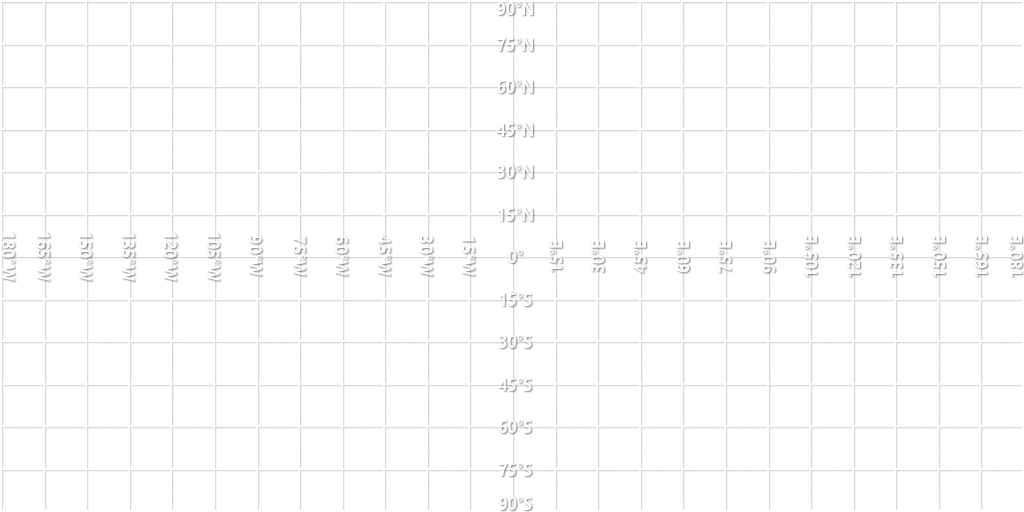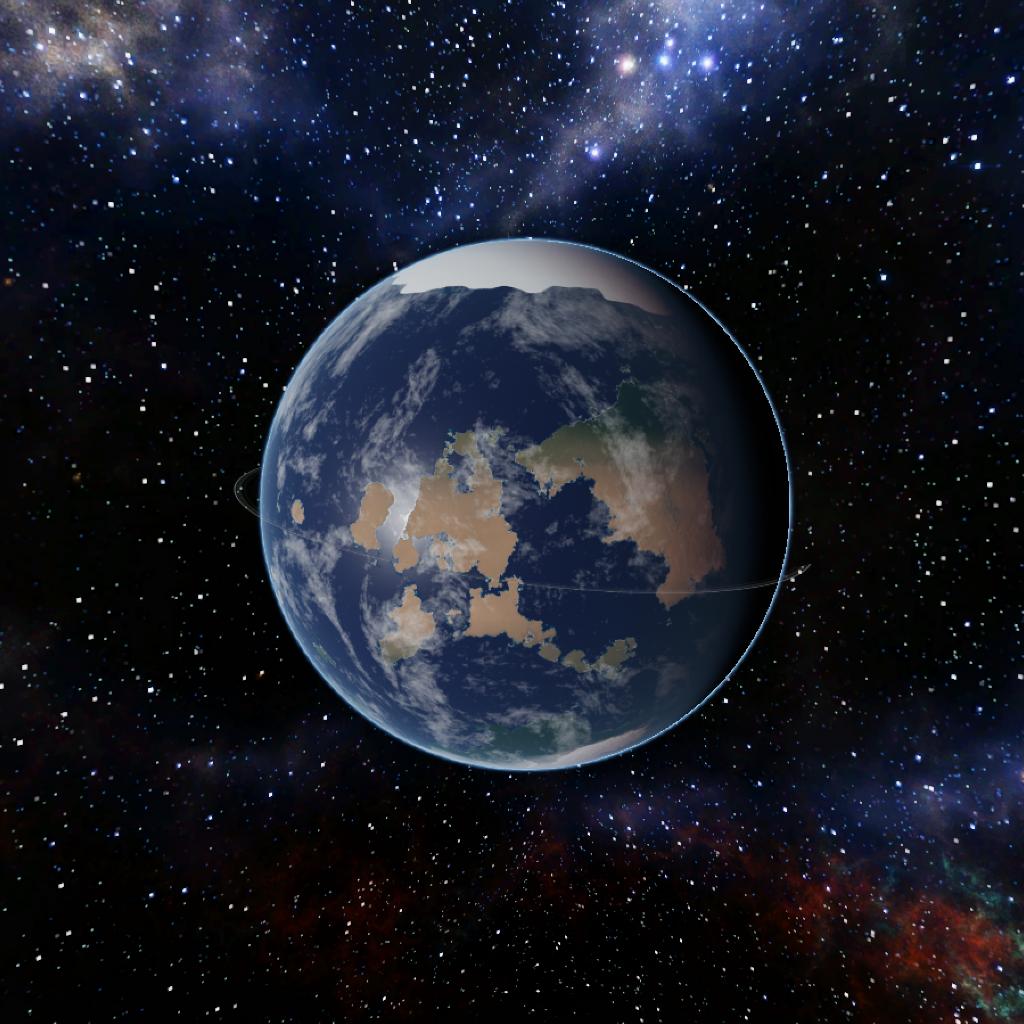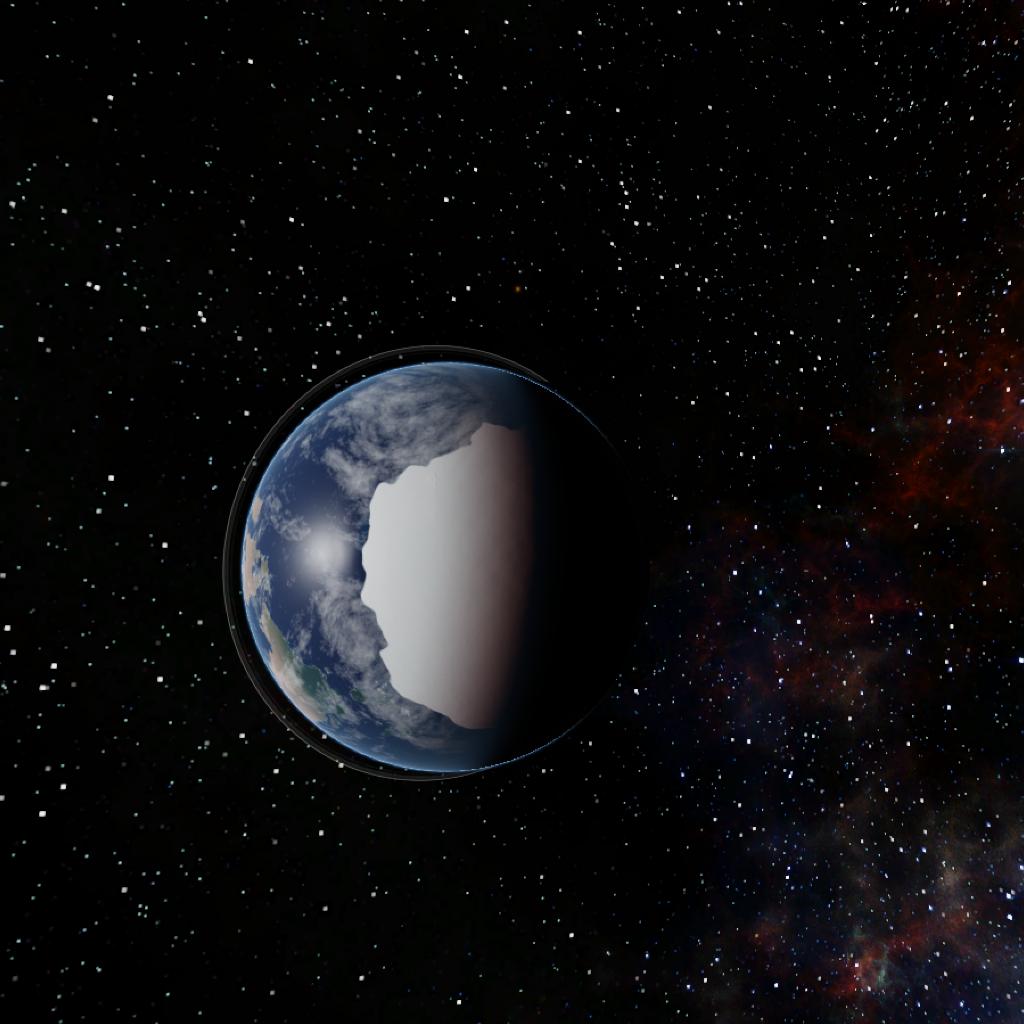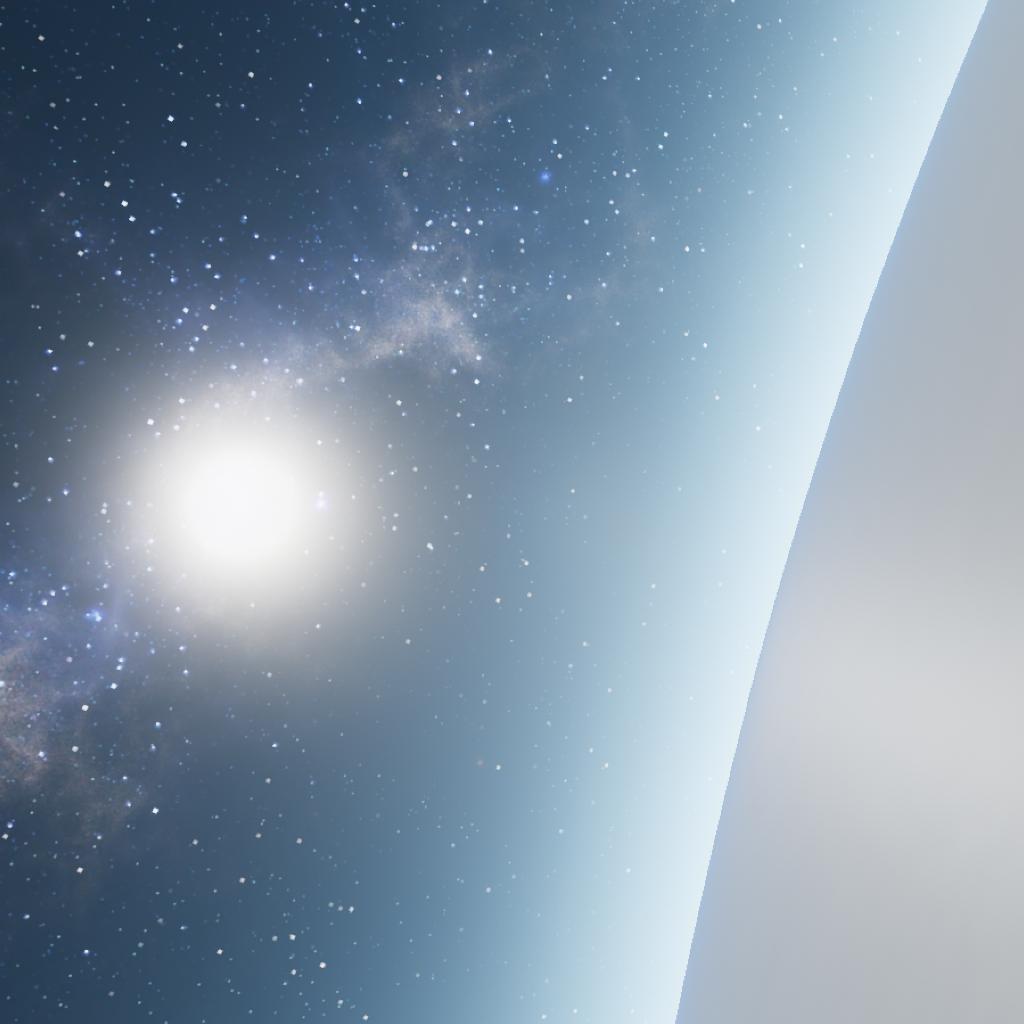A large planet that is able to sustain life, it has deep oceans and a rich history.
It formed from many planetecimals and collected its water from many comets arriving from the dense ice belt. How objects this far made their way to Dalkso is a major scientific mystery. Most likely caused by the migration of Kanavaia early on
Dalkso's moons are formed from similar material to Dalkso but have a mixture of other materials not found on Dalkso, suggesting that Dalkso and its moons formed from a collision between it and a second object in the past. A near head-on collision flung material into orbit, which coalesed into the 3 moons we see today: Naros, Carodo and Eritu.
A faint ring is visible suggesting a 4th moon that drew too close to Dalkso and was ripped apart.
The planet is a biome-diverse place, with massive ice caps on both poles, tundra, plains, forests and deserts. It has many islands.
CHARACTERISTICS
- Radius: 1,274 km
- Sea Level: 0 m
- Surface Gravity: 9.8 m/s
- Rotational Period: 14h
- Escape Velocity: 5.00 km/s
- Mass: 2.38E+23kg
Atmosphere
- Height: 66 km
- Scale Height: 9,494 m
- Surface Air Density: 1.200 kg/m3
- Surface Temperature: 297 K
EQUIRECTANGULAR MAP





